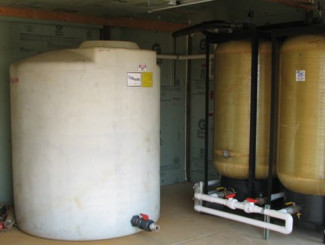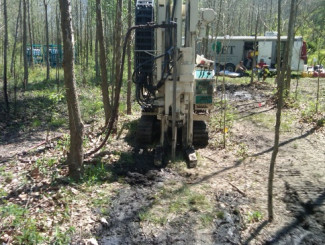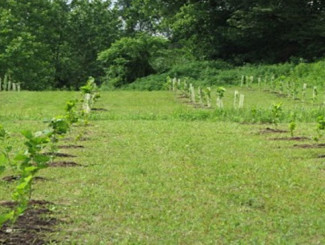RCRA Corrective Action Project Closed Industrial Landfill Site – Ohio
BACKGROUND:
ONE is the lead consultant for a large-scale ground water remediation project located in southeastern Ohio. Prior to operation as an industrial landfill, the site was a US Navy munitions depot and burn pit activities were historically conducted onsite. The industrial landfill was reportedly built above the former burn pit area, and consequently the site is regulated under two regulatory programs concerning a release of chlorinated volatile organic compounds (CVOCs) into groundwater related to historical activities. These regulatory programs include the United States Environmental Protection Agency (USEPA) Resource Conservation and Recovery Act (RCRA) Corrective Action Program; and the Ohio Environmental Protection Agency (OEPA) Solid Waste Program.
CONSTITUENTS OF CONCERN:
Site constituents of concern include trichloroethylene (TCE), and daughter products cis-1,2-dichloroethylene (cis-1,2-DCE) and vinyl chloride (VC). The original TCE plume was discovered in the early 1990’s and shortly thereafter an active pump and treat groundwater plume containment system (GPCS) was installed as an interim measure to protect human health and the environment. The GPCS greatly improved water quality at the site as shown by the significant reductions to the original TCE plume in both size and concentration. After 10 plus years of GPCS operation, concerns surrounding an area of “DCE stall” where inflated and stagnating levels of DCE had accumulated in one portion of the site downgradient from the source area. While TCE had effectively attenuated over time, the degradation of daughter products was not progressing. The GPCS removal rates of CVOCs had decreased to the point that the system was not removing contaminants in an efficient and cost-effective manner.
REMEDIAL STRATEGY:
ONE joined the project team in 2010 with the goal of guiding the remedial strategy of the site in a new direction. At this point the GPCS removal rate, in pounds of CVOCs, had decreased by 80% and had become asymptotic. After careful analysis of the plume and the hydrologic conditions, the team hypothesized that by eventually reverting the aquifer back to a natural system, the dissolved oxygen levels would likely change from aerobic (due to the GPCS influence) to anaerobic, thereby promoting conditions suitable for organisms capable of naturally carrying out dechlorination of CVOCs. It was thought that this gradual change in physical conditions could accelerate natural attenuation within the plume and address the area of the site in which the “DCE stall” was observed.
As part of a transition program for the GPCS, the active pumping was scaled back in phases, from approximately 50 gallons per minute (gpm) to 16 gpm in 2010, with more frequent monitoring of select wells within the original capture zone. After evaluation of more than a year of data collected under reduced pumping conditions, it became clear that the reductions in pumping had no adverse effects on water quality at the site and that the plume was contained under low-flow pumping. ONE submitted a Work Plan to both regulatory agencies which proposed additional remedies to enhance attenuation of CVOCs at the site. The Work Plan focused on bringing sustainable treatments that would require less energy and investment to reach clean-up goals. These treatments included (1) a permeable reactive barrier (PRB); and (2) a pulsed pumping program as part of the GPCS transition. The PRB was installed in an area where CVOC levels were some of the highest reported onsite and there was little influence from the GPCS.
Upon completion of the pulsed-pumping program it was determined that: (1) the plume was contained despite long stretches of non-pumping; and (2) no adverse impacts to water quality were observed. Furthermore, the PRB performance has demonstrated significant reductions in CVOC concentrations thereby reducing the estimated time frame for natural attenuation to meet site-wide remedial goals. Both regulatory agencies agreed with the recommendation to keep the system shut-down. Currently, ONE is working with the USEPA to transition the site from an Interim Remedy to a Final Remedy under the RCRA Corrective Action Program which consists of Monitored Natural Attenuation (MNA) and Phytoremediation. The OEPA has verbally agreed to revise the Corrective Measures Program to reflect the revised remedial program as well.
Under the leadership of ONE, sound scientific analysis coupled with active communication allowed the regulators to be more comfortable with the idea of the GPCS shut-down and with moving the site to a final remedy of MNA and phytoremediation.




